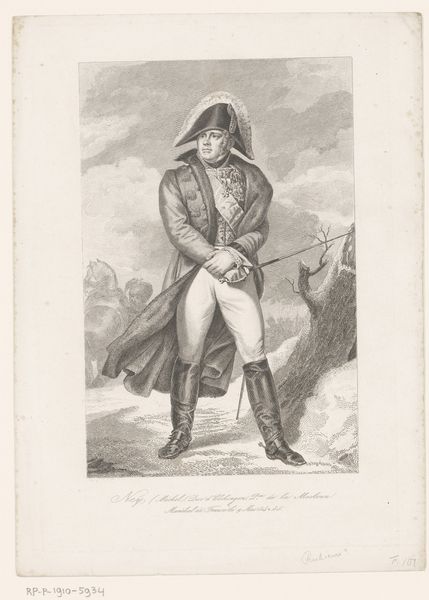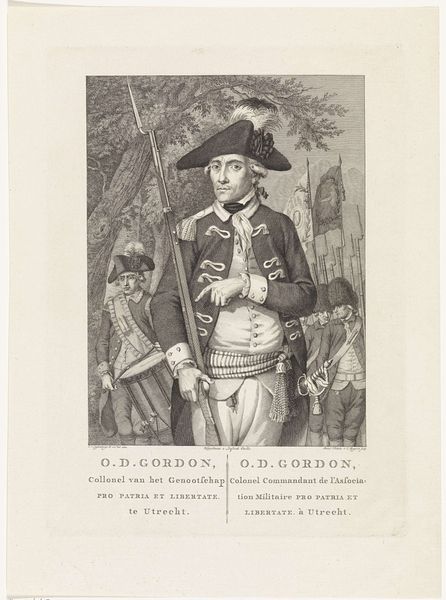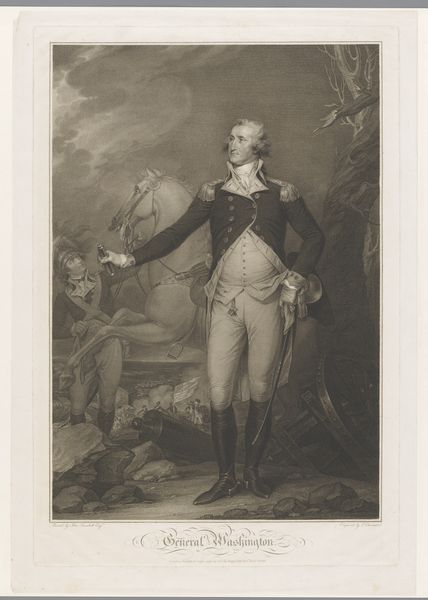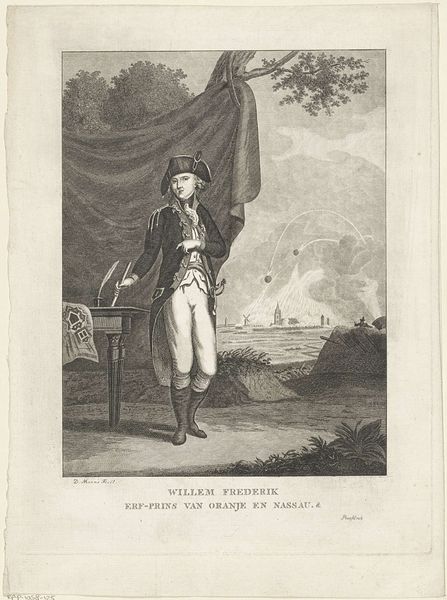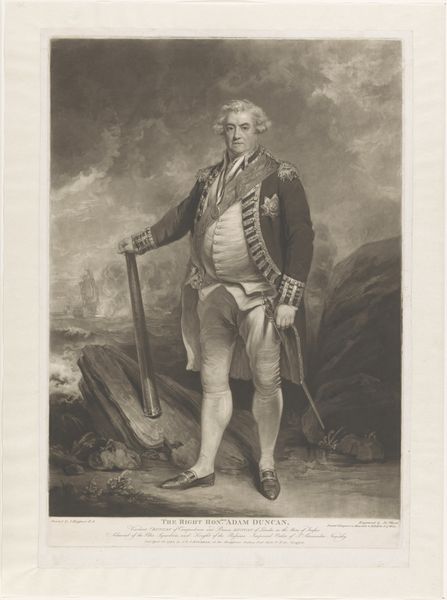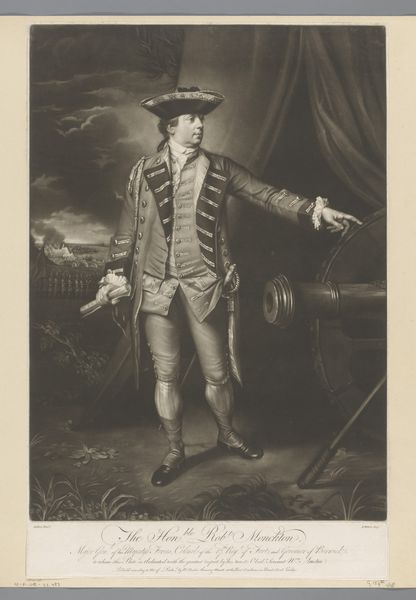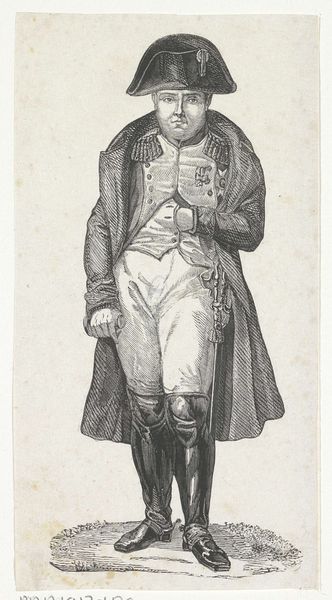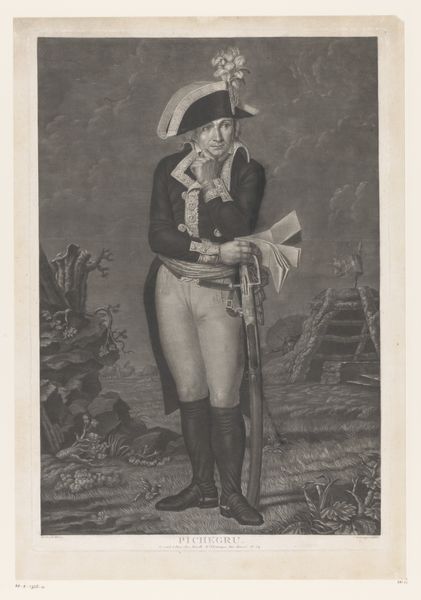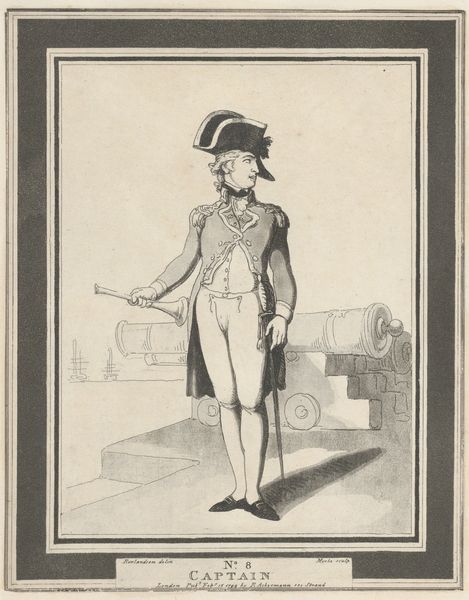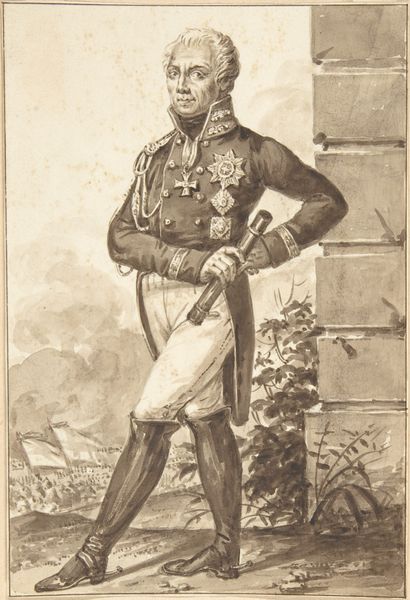
print, graphite, engraving
#
portrait
#
neoclacissism
# print
#
charcoal drawing
#
figuration
#
line
#
graphite
#
history-painting
#
graphite
#
engraving
#
realism
Dimensions: height 730 mm, width 488 mm
Copyright: Rijks Museum: Open Domain
Editor: This is Luigi Rados's "Portrait of Napoleon I Bonaparte" from 1812, rendered as an engraving. I am immediately struck by its duality. Napoleon is standing with what seems to be such authority and prominence. At the same time, however, the scene unfolding in the background indicates chaos. How might you interpret this contrast? Curator: It’s a fascinating tension, isn't it? This portrait employs Napoleon's familiar symbols - the uniform, the hat, and the direct gaze – that create an aura of power and leadership. These are deliberate visual cues designed to project an image of invincibility. Now, look beyond Napoleon himself. What objects or details do you notice? Editor: Well, I can make out some war-torn debris on the lower right. Almost hidden by it is what looks to be broken headgear resting on the ground! Curator: Precisely! A visual language speaks to his ambition and power on one hand and vulnerability on the other, foreshadowing both triumphs and defeats. Even the suggestion of conflict in the backdrop speaks volumes, yes? These aren’t mere background elements; they act as symbols. The broken hat speaks to an almost "fallen state." Do you think this contrast speaks to the historical understanding of his legacy today? Editor: It’s interesting to consider. Maybe it reflects the complex nature of historical memory itself: a figure who inspires awe, but whose ambition led to so much loss. Thanks, that was really enlightening! Curator: Indeed. Visual representation has a way of shaping our perceptions of even larger histories. A fascinating way to understand how people become legends, no?
Comments
No comments
Be the first to comment and join the conversation on the ultimate creative platform.
